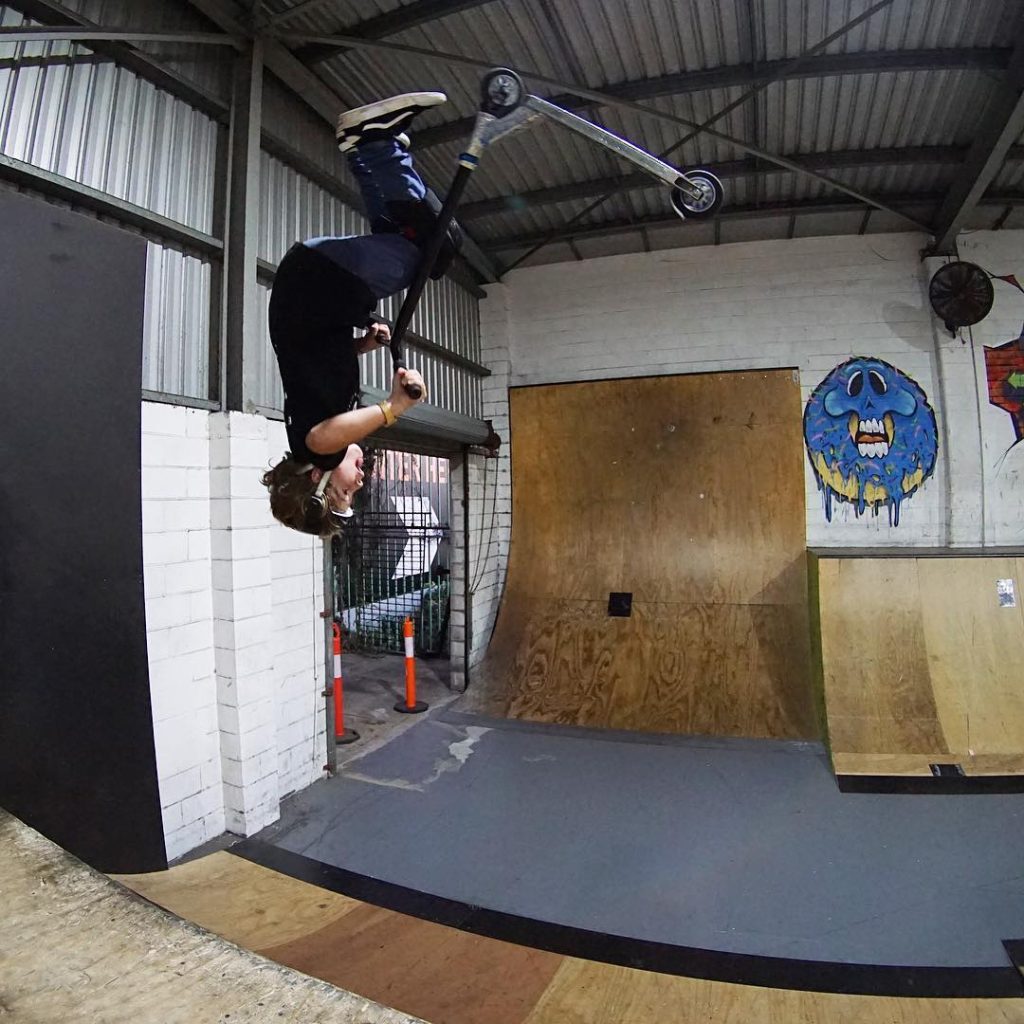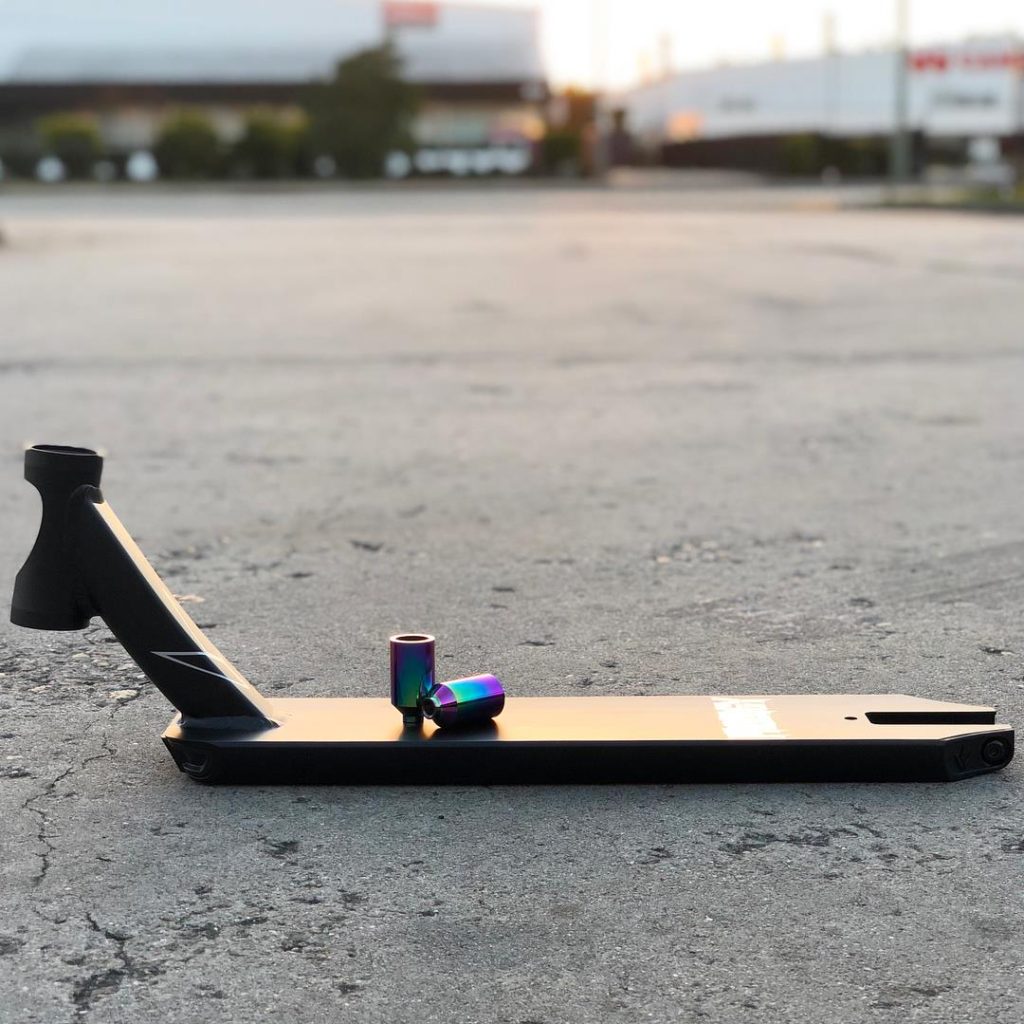Are you looking to get your child into the exciting world of trick scooters? Awesome choice! Trick scooters are not only a blast but also a fantastic way for kids to stay active and develop new skills. But before you hit the skate park, there are some key things to consider to ensure a safe ride. From scooter size and weight to wheel type and deck durability, this guide will explain everything you need to know to pick the right trick scooter for your little rider.
Key Components of a Trick Scooter

A trick or stunt scooter is designed for performing jumps, tricks, and stunts at skate parks or on the street. Unlike regular scooters, scooters for stunt tricks are more robust and have a fixed, non-adjustable handlebar for stability during tricks. Key components include:
- Reinforced Deck: Provides durability to withstand impacts and landings.
- Strong Handlebars: Offer control and stability during tricks.
- Smooth and Durable Wheels: Enhance performance and ensure smooth rides.
- Sturdy Fork: Handles the impact of jumps and tricks.
- Reliable Brake: Ensures safety during rides.
These features make stunt scooters tougher and more suitable for extreme use compared to regular scooters, which are primarily for casual riding.
Choosing the Right Trick Scooter for Your Child
Age and Skill Level
When choosing a stunt scooter for your child, it’s important to consider their age and skill level. Younger kids or beginners need scooters with smaller, lighter decks and lower handlebars for easier handling and control. For older or more experienced riders, opt for sturdier scooters with wider decks and taller handlebars to support advanced tricks and stunts.
Always check the manufacturer’s age and skill recommendations to ensure a safe and enjoyable experience as your child progresses in their scootering skills.
Size and Weight
Stunt scooters vary in size and weight, making it crucial to choose the right one for your young rider. Since stunt scooters are not height adjustable, it’s important to select a scooter based on your child’s height rather than their age. Measure your child’s height and compare it to the scooter’s handlebar height, which should ideally reach their waist or slightly above for optimal control. A properly sized scooter ensures better handling and safety, allowing your child to perform tricks comfortably.
Materials
Trick or stunt scooters come in various materials, each affecting performance and durability.
- Aluminium Scooters: Lightweight and sturdy, ideal for beginners and intermediate riders.
- Steel Scooters: Heavier but extremely durable, suitable for aggressive stunts and heavier riders.
- Titanium Scooters: A premium lightweight option for advanced riders, though more expensive.
When choosing a scooter, consider the material of the deck, handlebars, and fork. Look for reinforced or heat-treated components for added strength. The best material depends on your child’s skill level, intended use, and budget, ensuring they have a scooter that’s both safe and capable of handling their tricks.
Wheels
The right wheel size depends on your child’s skill level and the type of tricks they want to perform:
- Beginners (6-8 years old): Opt for larger wheels (110-125mm) for added stability while learning the basics.
- Intermediate Riders: Consider transitioning to a scooter with smaller wheels (100-110mm) and a higher deck for better manoeuvrability and control.
- Experienced Riders: Go for pro scooters with the smallest wheels (90-100mm) for enhanced responsiveness, crucial for executing tricks like whips, tailwhips, and barspins with precision and speed.
Deck

When choosing scooters stunt, you need to think about the deck size and shape. Taller riders generally need a bigger deck for balance. For tricks, many riders prefer shorter, narrower decks as they’re easier to flip and spin. However, these decks offer less foot space, which can be challenging for beginners learning to balance and land tricks. Deck height is also crucial; lower decks make pushing easier and lower the centre of gravity, beneficial for beginner stunt riders. The material of the deck is also crucial; aluminium decks are lightweight and durable, while steel decks offer maximum strength but add weight.
Bars
Choosing handlebars is also crucial when picking a trick scooter. Make sure they reach hip or waist height for comfort and good balance during tricks. Avoid bars that are too low, especially for beginners. Go for handlebars that aren’t wider than your kid’s shoulders—they make doing tricks easier. For beginners, wider handlebars give better stability as they learn. Getting the right handlebar height and width helps your child ride comfortably and safely, enjoying their scooter tricks to the fullest while learning new skills.
Safety Gear
Before your kid hits the skate park with their new scooter, make sure they’re equipped with the essential safety gear. They need a properly fitting helmet to protect the head during falls or collisions. Elbow and knee pads provide cushioning and support against scrapes and impacts. Wrist guards help prevent wrist injuries from impacts during tricks. Closed-toe shoes with good grip are also important for stability. Additionally, encourage your child to wear comfortable but not too baggy clothing that allows them to move freely. Teaching them basic skate park etiquette and rules will further enhance their safety and enjoyment as they embark on their riding adventures.
























